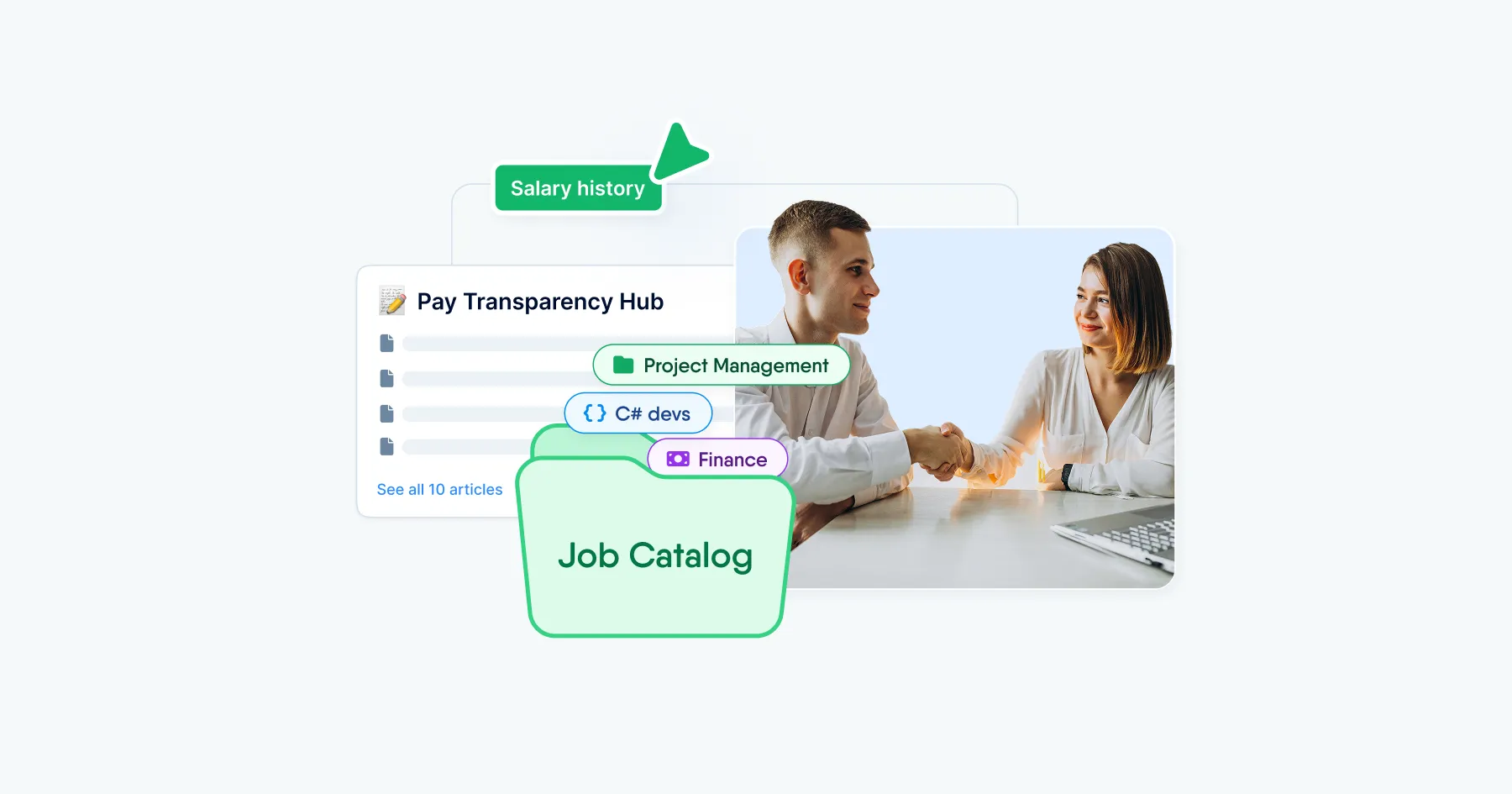Employee experience
What is the employee experience?
What is the employee experience?
The employee experience represents their journey through your organization.
The employee experience encompasses everything from milestones to personal interactions, the use of technology, and the actual working environment.
Employee experience can also affect an employee's decision to return to a former employer and the likelihood that he or she will recommend the organization to others, which affects the organization's reputation and talent attraction.
A high quality employee experience can also make employees decide to pursue a career with your organization because they know your company provides them with the best opportunities to develop and improve their well-being.
As a result, improving the employee experience should be a strategic priority for every organization.
Key aspects of the employee experience include:
Attracting
Hiring
Onboarding
Engaging
Delivering results
Development
Offboarding
The experiences employees go through at each stage have an impact on employee outcomes and branding.
Let's consider the following seven steps.
Attracting attention
Before attracting a candidate's attention the company must answer the question: What are the key elements of our culture that we emphasize to attract the top talent?
Hiring
Is our hiring process fair? Is our selection process geared toward star employees?
Onboarding
Do we validate employees' decisions to join us? Do employees appreciate our values in the onboarding process?
Engagement
Do our employees come to work each day excited and engaged in what they are doing? Is everything organized based on their strengths and the company’s goals?
Performance
Is a fair and accurate performance evaluation of each employee being carried out? Are we exceeding their expectations?
Development
Do our current and potential performers see a future with us? Do we offer flexible, personalized career paths? Do we constantly take care of the career development of our employees?
Leaving the company
Who are our competitors for the top talent? Why does our top talent leave? Does our farewell program create a positive experience?
A strategy for improving the employee experience framework
Imagine an employee's journey. How do they feel when they are hired? How are they managed? How does it feel when they leave the organization? Considering these experiences can help managers better understand the human elements of the workplace and, as a result, create a better employee experience.
What can help improve the employee experience?
Employees have a fairly stable set of basic needs at all stages of the life cycle in the company.
Manager
The supervisor-employee relationship is the most important relationship at every stage of an employee's journey. Supervisors influence the employee experience in how they engage them and develop their strengths. Supervisors have the ability to continually help employees see their current value and future in the organization. This means that any employee experience strategy must prioritize and develop good supervisors.
Role in the company
"What is expected of me?" - is a simple question, but it often goes unanswered in the workplace. Less than half (41%) of American workers believe that their job description aligns well with the work they do. The role is redefined through ongoing participation in goal setting, meaningful feedback, and performance appraisal.
Team
People produce the best results when they respect the people they work with and believe they are performing at their best. They also need to see how valuable they are as members of their team. Employees need to know who their partners are in the organization during onboarding and then relationships begin to develop.
Work environment
An appropriate physical environment is a psychological necessity for job performance. A supportive work environment should give staff the freedom to work in the way they recognize as best - for example, with open space for discussion or enclosed offices for individual work, depending on the task at hand. Light, temperature, ergonomics, noise, and distractions are additional factors that affect the employee experience.
Well-being
It's hard to imagine a great employee experience without frequent "good days." Global research has shown that what makes a day good (wellbeing) is remarkably universal. It includes factors such as living with love, having the energy to do what you want, and being able to give back to your community. Gallup identifies five elements of well-being: purposeful, social, financial, physical and social.
How HR software helps improve an employee's experience in their team
Since the main function of the HR software is automation it helps free the employee from repetitive tasks and enables them to live a full employee experience in terms of optimized processes and a fine-tuned relationship with their colleagues.
HR software connects every stage of the job, first with the candidate and then with the new employee, allowing a strong connection to be established from first contact. In turn, this illustrates that the company maintains a healthy balance between work, communication and the employee's personal goals.
That's why, in case you want to enhance your reputation as an employer, and allow your team to grow, you should consider using an HRM system. Book a demo presentation with our managers who will help you understand how the system will boost your overall employee experience.

